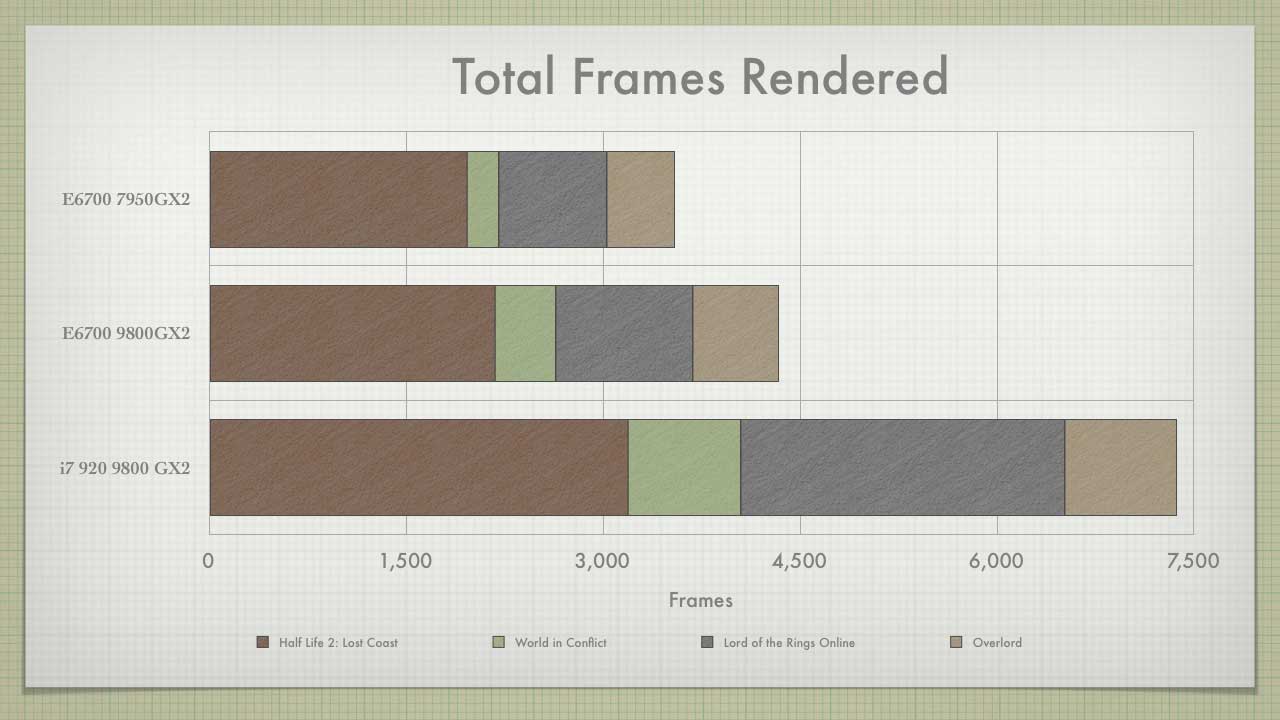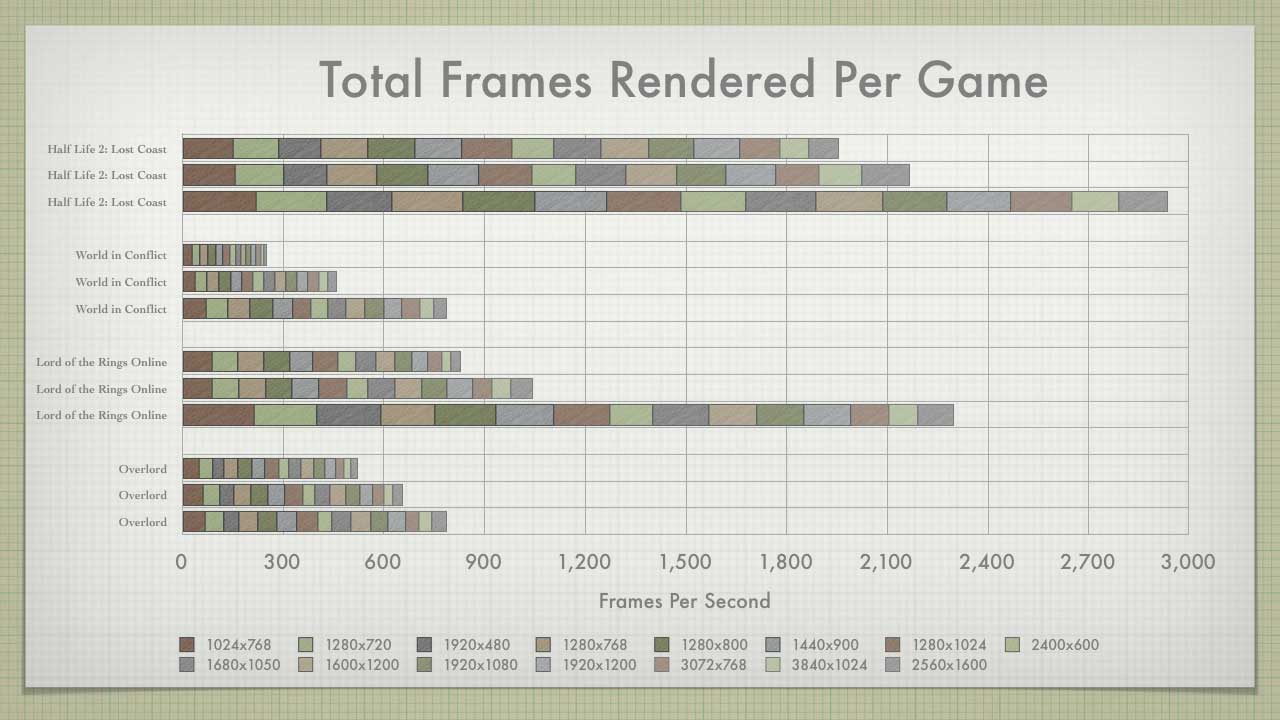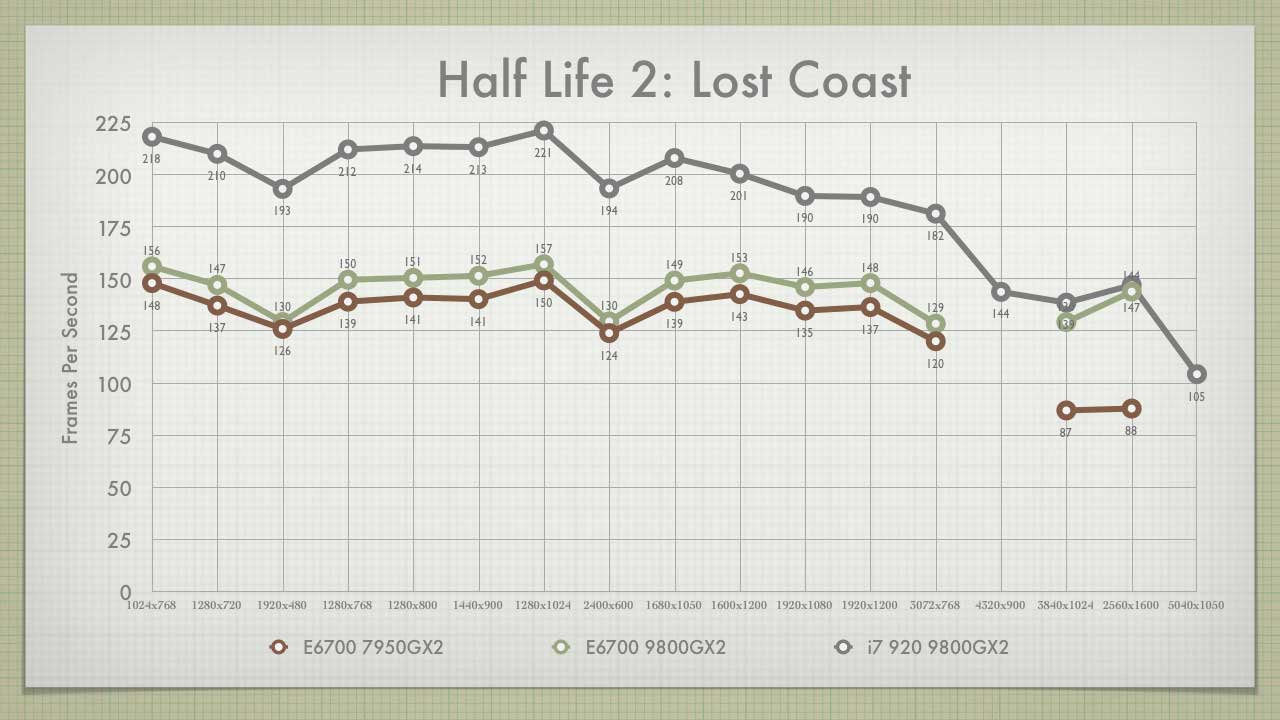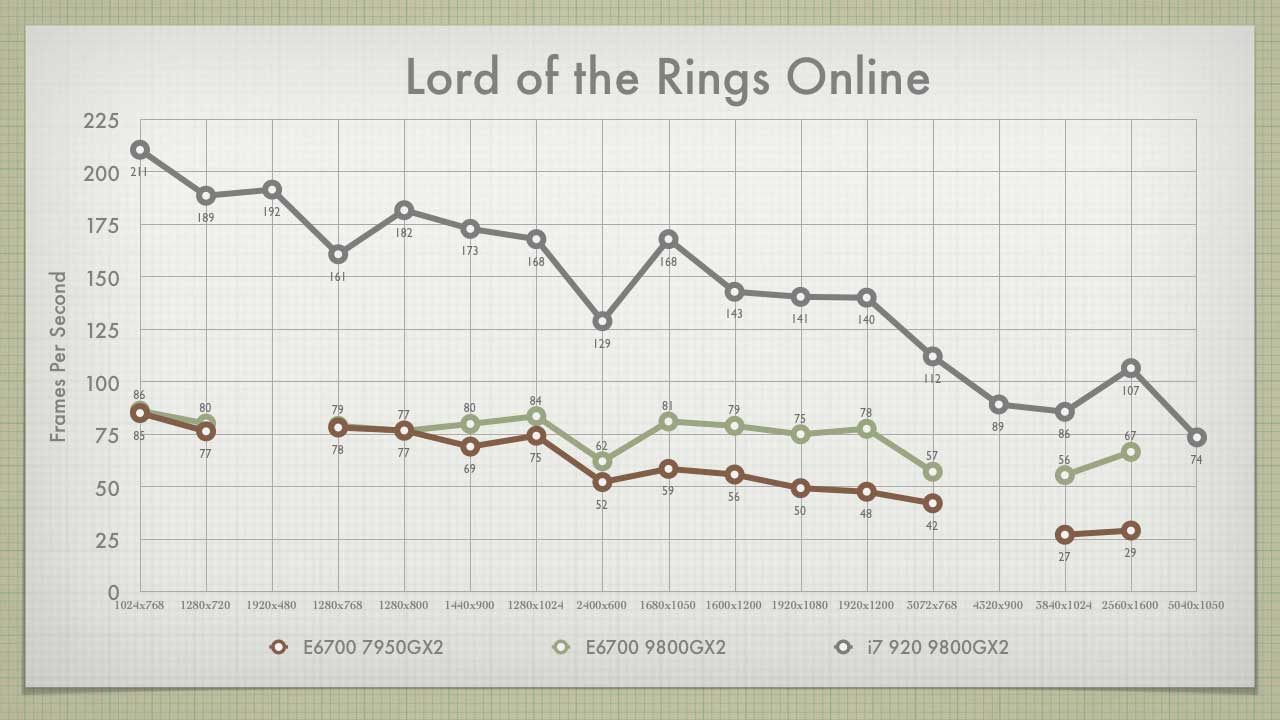NVIDIA GeForce 9800GX2 Review: Core i7 920 Update
I wanted to share some data to update my original Widescreen and Surround Benchmarking Suite. I'm in the process of updating my entire rig, and thought I would pass along benchmarks from the first phase. Next phase is a GTX 295, which I have sitting in a box on the floor.
You can hit the original article to see my original system specs, but it was a Core2Duo E6700, GeForce 9800 GX2 and 4GB of RAM. One unique thing to note is that my old E6700 and i7 920 both ran at 2.67GHz.
As of now, my rig stands at:
- GeForce 9800GX2 Reference Board from NVIDIA at 600MHz Core and 2000MHz Memory
- EVGA X58 Tri-SLI Motherboard
- Intel i7 920 at 4x2.67GHz
- 6GB G.Skill DDR3 RAM
- 2x Samsung 320GB T-Series HDD (one for the OS and games; one for swap file and FRAPS)
- LG Super Multi Blu (HD-DVD/Blu-Ray Player)
- Onboard audio
- Enermax Infiniti 720W
- Antec Skeleton
- Dell 3007WFP
- Matrox Digital TripleHead2Go
- 3x Dell SP2008WFP
- Logitch G15 Keyboard & G5 Mouse
The Benchmarks
I cut back on the games to bench. More than ever, time is of the essence in my life. So, I cut out a few of the games, as follows:
- Company of Heroes - Built in benchmarking tool is crap. It is an anamorphic 16:10 rendered movie, with a 60fps cap
- Bioshock - In the end I felt my original run wasn't accurate for all the time in the bathysphere (with its narrow FOV). It was also a manual run that took a fair amount of time. I could have cut it down to the "active" running part through the water and first lighthouse. But, that would have meant I couldn't compare the scores
- Oblivion - Overall disappointment the first time around. The run was super long (6 minutes). The game is pretty, but I still hate the wolves. It has a 60fps cap, and even on the lowest setting still hiccups in the same places.
Performance Summary


NVIDIA GeForce 9800GX2 Review: Core i7 920 Update - HL2: Lost Coast & LOTRO
Performance graphs of Half-Life 2: Lost Coast and Lord of the Rings Online


NVIDIA GeForce 9800GX2 Review: Core i7 920 Update - Overlord & World in Conflict
These graphs show the performance of Overlord and World in Conflict:


NVIDIA GeForce 9800GX2 Review: Core i7 920 Update - Conclusions
The Effect of Aspect Ratio on FPS
In many cases, wider FOV still played a larger role that raw pixels. TH2Go resolutions had a lower performance than widescreen resolutions with similar total pixel counts. And, like before 1920x480, 2400x600 and 3072x768 had similar performance; and 3840x1024 was often in line as well. The good news is that 4320x900 (3x1440x900) often had similar performance to 3840x1024 or 2560x1600, or both. But, 5040x1050 (3x1680x1050) had serious impacts on performance. But with 5.3M pixels, it well should.
Here is a table that outlines the Aspect Ratios covered in my testing:
| Aspect Ratio | 5:4 | 4:3 | 16:10 | 15:9 | 16:9 | 15:4 | 16:4 | 43:9 |
| Common Resolutions | 1280x1024 |
1024x768 1600x1200 |
1280x800 1680x1050 1920x1200 2560x1600 |
1280x768 |
1024x768 1920x1080 |
3840x1024 |
3072x768 |
4320x900 5040x1050 |
| Field of View | 100 | 103.6 | 113.5 | 115.6 | 118.9 | 148.7 | 150.6 | 155.3 |
| Increase from 4:3 | -3.47% | --- | 9.56% | 11.6% | 14.8% | 43.5% | 45.4% | 49.9% |

Conclusions
Quick conclusion - the i7 platform is a great step up. If you have an aging Core2Duo (my E6700 was no longer near the top of the pile), an i7 is a solid upgrade. It's not cheap when you have to get a new motherboard, proc and RAM. I would recommend the low-end 920. It's the cheapest proc and runs great. I haven't overclocked, but many reviews show a ton of headroom in it. Everything is silky smooth at stock speeds. I was quite surprised at how CPU bound I was in many areas. I had expected an E6700 to still be fairly competent.
- HL2: Lost Coast is no longer CPU bound under 2.4M pixels, if you could consider ~150fps "bound"
- World in Conflict now hovers around 60fps (versus 30fps) up to 3072x768 (2.4M pixels), and is 30-40fps above that
- LOTRO scaled very well. It offers full 5040x1050 (on Ultra settings) above 60fps, and on part with 720p resolutions under the E6700.
- Overlord is deceptively hard on a system, and still looks to be GPU bound. But the i7 added about 20% across the board.
What's Next
First off, I'm adding some benchmarks. I'm adding in Crysis WARHEAD and Far Cry 2. I'm going to add them to the current batch and test them on my current rig. Then, it's the upgrade to the GTX 295.
I'm going to drop a bunch of resolutions. I'm going to drop 1024x768 through 2400x600. Few people use those low end resolutions (at least with this munch horsepower behind it), and the low-end TH resolutions play on par with the top end (and scale well if needed). I may also drop 1920x1080. Very minimal difference between it and 1920x1200, and the wider FOV doesn't seem to effect it much. I will also probably drop 4320x900, as it plays on par with 3840x1024.
That will leave me with: 1600x1200, 1680x1050, 1920x1200, 3072x768, 3840x1024, 2560x1600 and 5040x1050.
I'd also like to find a good racing or flight sim game as well. So, if anyone has any suggestions let me know. Finally, I'd like to run new games through this round of testing when they launch. Would be nice to see how things like Mirror's Edge scale across WS and WTH.